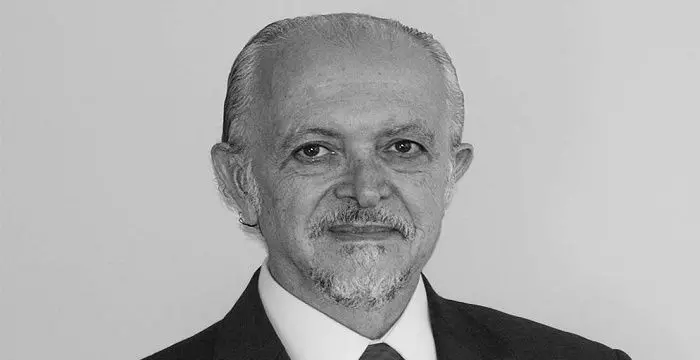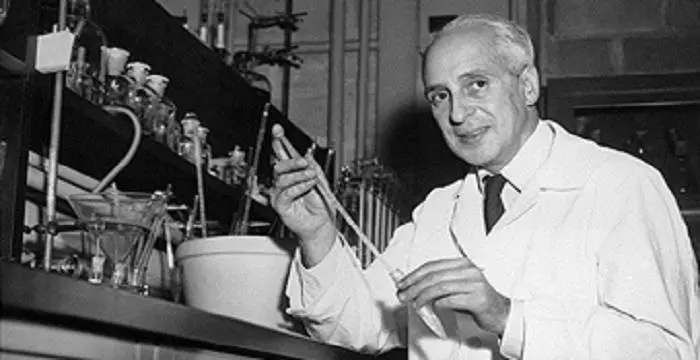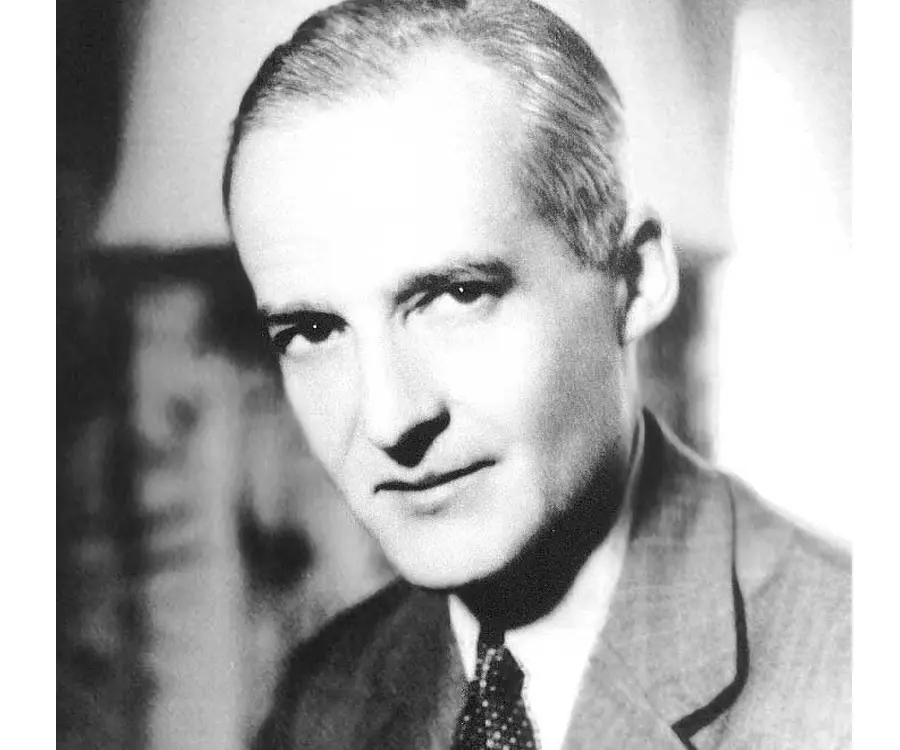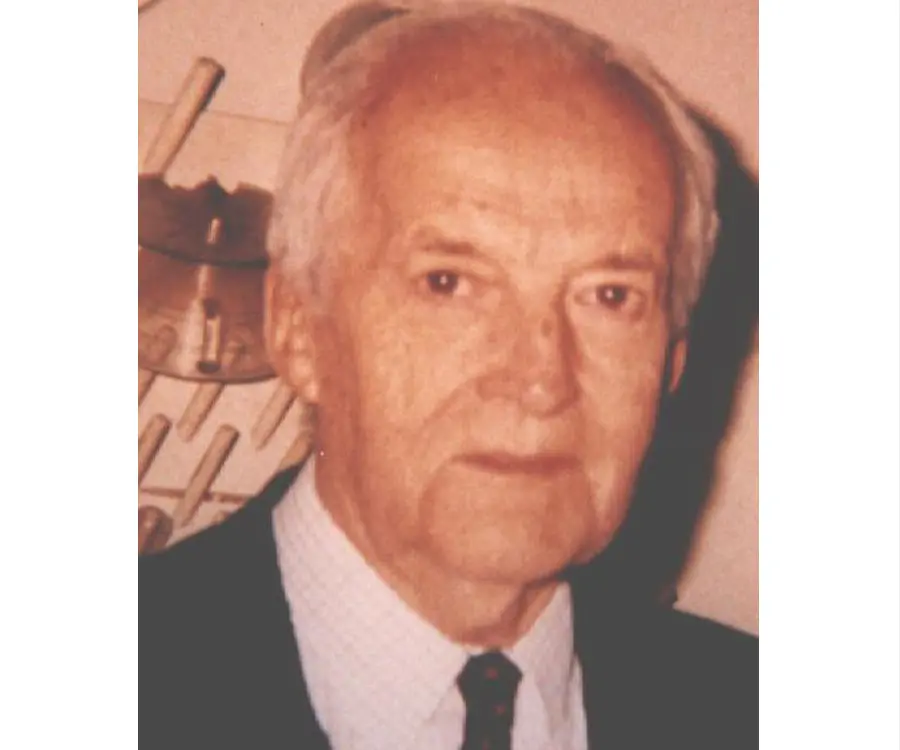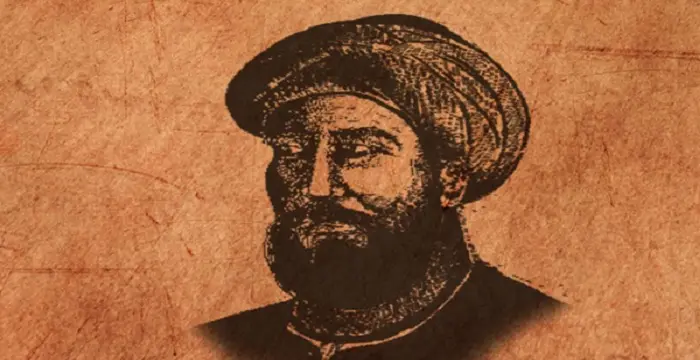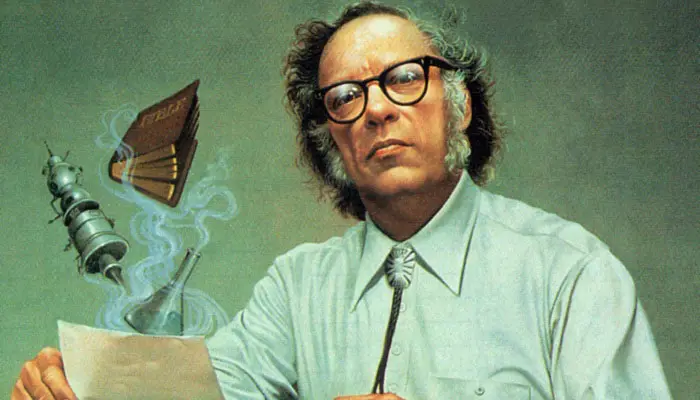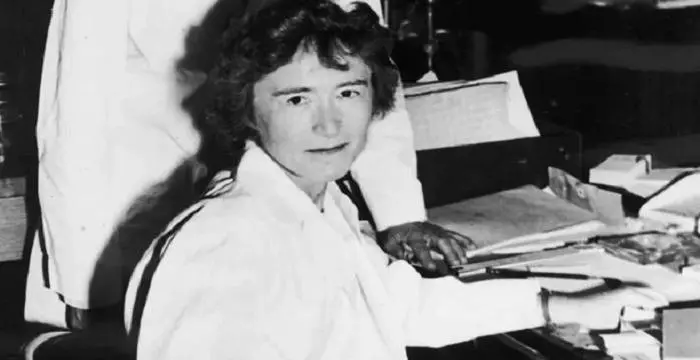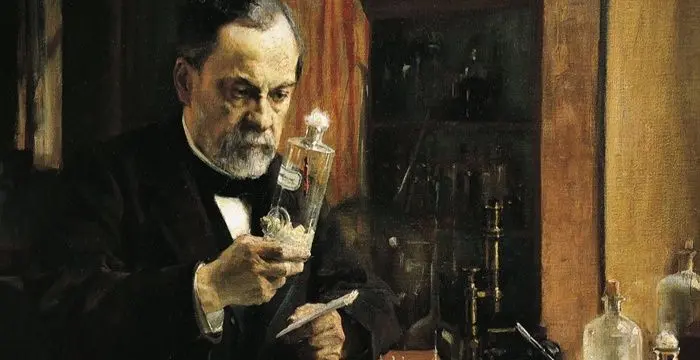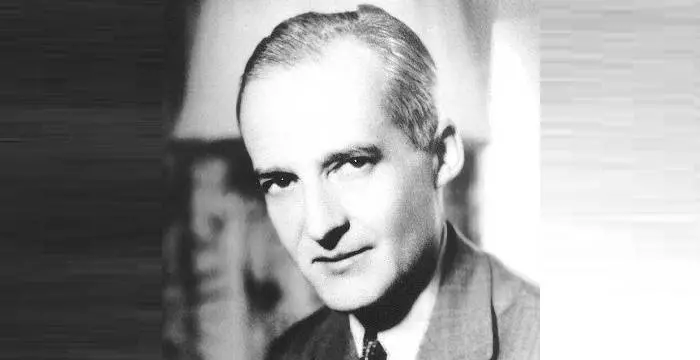
Luis Federico Leloir - Notable Hispanic Scientists, Timeline and Childhood
Luis Federico Leloir's Personal Details
Luis Federico Leloir was an Argentinean physician and biochemist who won the Noble Prize for Chemistry in 1970
| Information | Detail |
|---|---|
| Birthday | September 6, 1906 |
| Died on | December 2, 1987 |
| Nationality | Argentinian |
| Famous | Hispanic Scientists, Physicians, Biochemists, Notable Hispanic Scientists |
| City/State | Paris |
| Spouses | Amelia Zuberbuhler |
| Childrens | Amelia |
| Universities |
|
| Birth Place | Paris, France |
| Gender | Male |
| Father | Federico Leloir |
| Mother | Hortensia Aguirre de Leloir |
| Sun Sign | Virgo |
| Born in | Paris, France |
| Famous as | Biochemist, Physician |
| Died at Age | 81 |
// Famous Notable Hispanic Scientists
Mario J. Molina
Mario Molina is a Nobel Prize winning chemist from Mexico who co-developed the theory of ozone depletion due to CFCs. To know more about his childhood, career, profile and timeline read on.
Severo Ochoa
Severo Ochoa was a Spanish physician and biochemist who won the 1959 Nobel Prize in Physiology or Medicine. Check out this biography to know about his childhood, life, achievements, works & timeline.
Luis Federico Leloir's photo
Who is Luis Federico Leloir?
Luis Federico Leloir was an Argentinean physician and biochemist who won the Noble Prize for Chemistry for finding out the processes which convert carbohydrates into energy in the body. He was born in France but moved to Argentina with his family when he was only two-year-old. He started his research work on the role of adrenalin on the metabolism of carbohydrates and the effects of fatty acids when oxidized. Later on he worked on the process in which carbohydrate entering the body was broken down by nucleotides to produce sugar which was stored in the body and then converted into energy. He proved to the world that true scientific research on an international level could be carried out in a third-world and underdeveloped country even when the country is gripped with political unrest. Lenoir was also a good craftsman which helped him build equipments required for carrying out his experiments. Funds for research in Argentina were not readily available at that time. In times of distress Leloir’s expertise in making his own equipment helped him tide over difficulties faced due to the unavailability of proper tools allowing him to continue with his work without any hindrance.
// Famous Physicians
Al-Zahrawi
Al-Zahrawi, was an illustrious medieval Arab Muslim physician and surgeon. Check out this biography to know about his childhood, family life, achievements and interesting facts about him.
Jabir Ibn Hayyan
Jabir Ibn Hayyan was a medieval era polymath. Check out this biography to know about his life, works and achievements.
Maria Montessori
Maria Montessori was a physician and educator who developed the approach of Montessori education. This biography of Maria Montessori provides detailed information about her childhood, life, achievements, works & timeline.
Childhood & Early Life
Luis Federico Leloir was born in Paris, France, on September 6, 1906 where his parents had come for medical treatment. His father, Federico Leloir was a non-practicing lawyer and his mother was Hortensia Aguirre de Leloir.
He returned to Argentina with his mother after his father died in Paris.
He did his initial schooling from the ‘Escuela General San Martin’ primary school, the ‘Colegio Lacordaire’ secondary school and finally the ‘Beumont College, England’ where he studied only for a few months.
He studied architecture for some time at the ‘Ecloe Polytechnique’ in Paris but had to abandon his studies due to poor grades.
He joined the ‘Department of Medicine’ at the University of Buenos Aires’ after returning to Argentina. He received his degree in medicine in 1932 and did his internship at the ‘Ramos Mejia Hospital’ in Buenos Aires from 1932 to 1934.
Career
Luis Federico Leloir joined the ‘Institute of Physiology’ under the ‘University of Buenos Aires’ as a research assistant and worked there with Bernardo A. Houssay on the role played by adrenalin on carbohydrate metabolism from 1934 to 1935.
He moved to the UK in 1936 and worked for one year at the ‘Biochemical Laboratory’ of ‘Sir Frederick Gowland Hopkins Hospital’ under the ‘University of Cambridge’.
He returned to Argentina in 1937 and completed his doctoral work on the effect of the adrenal glands on carbohydrate metabolism.
He moved to the United States in 1943 due to political unrest in Argentina and joined the department of pharmacology at the ‘Washington University School of Medicine’ in St. Louis. While there, he worked with Carl F. and Gerty T. Cori at the ‘Cori’s Laboratory’ located in St. Louis.
In 1944 he joined the ‘College of Physicians and Surgeons’ under the ‘University of Columbia’ in New York as a research assistant and worked with D. E. Green.
He returned to Argentina in 1945 to work under Houssay again at the ‘Institut de Investigaciones Bioquimicas de la Fundacion Campomar’ or the ‘Campomar Biochemical Research Institute’ in Buenos Aires. In 1947 he was appointed the Director of the institute. Despite meager funding he started research on the formation and breakdown of lactose in the body which led to the discovery of nucleotides which help to store sugar in the body during the biosynthesis of carbohydrates.
By 1947 he had built up a team of scientists which included Raul Trucco, Alejandro Paldini, Enrico Cabib and others who helped him find out the reasons of hypertension due to a malfunctioning kidney.
He and his team discovered the sugar nucleotides responsible for the metabolism of carbohydrates in the beginning of 1948 and later the primary mechanisms of galactose metabolism, presently known as ‘Leloir pathway’, which caused ‘galactesemia’.
When Jaime Campomar, the industrialist who had funded the Institute, died in 1956, the research work came to a halt due to lack of funds. Leloir arranged for funds from the ‘National Institute of Health’ in the United States to keep the research at the institute going.
A fruitful collaboration between Leloir’s ‘Investigaciones Bioquimicas de la Fundacion Campomar’ and the ‘School of Sciences of Buenos Aires’ started in 1958 when the government sanctioned a new building for the institute.
Leloir was appointed the Head and Professor of the ‘Department of Biochemistry’ in the ‘University of Buenos Aires’ in 1962.
In 1983 he became one of the ‘Founding Fellows’ of the ‘Third World Academy of Sciences’ or TWAS which is currently known as the ‘Academy of Sciences for the Developing World’.
Leloir remained the director of the ‘Campomar Biochemical Research Institute’ till his death in 1987.
Major Works
Luis Federico Leloirs’s articles and books include ‘Suprarrenales y Metabolismo de los hidratos de carbon (1934)’, ‘Farmacologia de la hipertensia (1940)’, ‘Hipertension arterial nefrogena (1943), ‘Invitro Synthesis of Particulate Glycogen’, ‘Properties of synthetic and native liver glycogen’and others.
Awards & Achievements
Luis Federico Leloir received the ‘Third National Science Award’ in 1943.
He was made a member of the ‘National Culture Commission of Argentina’ in 1944.
He received the ‘T. Ducett Jones Memorial Award’ and a membership of the ‘Helen Whyte Foundation of New York’ in 1958, the ‘Bunge and Born Foundation Award’ in 1965, the Canadian ‘Gairdner Foundation Award’ in 1966 and the ‘Louisa Gross Horowitz Award’ from the University of Columbia, USA’ in 1967.
He received the ‘Benito Juarez Mexico Award’, ‘Juan Jose Jolly Kyle Award’ from the ‘Argentina Chemistry Association’ and an honorary doctorate from the ‘Universidad Nacional de Cordoba’ in 1968.
He was made an honorary member of the ‘English Biochemical Society’ in 1969.
He received the Nobel Prize for Chemistry in 1970.
He was awarded the ‘Orden de Andres Bello’ of the ‘Legion de Honor’ in 1971.
He was made a ‘Foreign Member of the Royal Society’ in 1972.
He was honored with the ‘Legion of Honor’ in 1982.
He received the ‘Diamond Konex Award: Science and Technology’ in 1983.
He also received awards from the ‘Severo Vaccaro Foundation’ of Argentina and was made a member of the ‘American Academy of Arts and Sciences, the ‘Academia Nacional de Medicina’, the ‘American Philosophical Society’ and the ‘Pntifical Academy of Sciences’
He received honorary degrees from several universities including the ‘Granada University, Spain’, the ‘University of Paris, France’, the ‘University of Tucuman, Argentina’ and the ‘La Plata University, Argentina’.
Personal Life & Legacy
He got married to Amelia Zuberbuhler in 1937 and had a daughter named Amelia.
Luis Federico Leloir died in Buenos Aires, Argentina, on December 2, 1987.
Trivia
Luis Federico Leloir invented the ‘salsa golf’ in the 1920s which is a mixture of ketchup and mayonnaise highly popular in Argentina.
He was liked by everybody for his unassuming, courteous and humorous temperament.
// Famous Hispanic Scientists
Mario J. Molina
Mario Molina is a Nobel Prize winning chemist from Mexico who co-developed the theory of ozone depletion due to CFCs. To know more about his childhood, career, profile and timeline read on.
Severo Ochoa
Severo Ochoa was a Spanish physician and biochemist who won the 1959 Nobel Prize in Physiology or Medicine. Check out this biography to know about his childhood, life, achievements, works & timeline.
Luis Federico Leloir's awards
| Year | Name | Award |
|---|---|---|
Other | ||
| 0 | Louisa Gross Horwitz Prize (1967) | |
| 0 | Nobel Prize in Chemistry (1970) | |
| 0 | ForMemRS (1972) | |
| 0 | Legion of Honour (1982) | |
Luis Federico Leloir biography timelines
- // 6th Sep 1906Luis Federico Leloir was born in Paris, France, on September 6, 1906 where his parents had come for medical treatment. His father, Federico Leloir was a non-practicing lawyer and his mother was Hortensia Aguirre de Leloir.
- // 1934 To 1935Luis Federico Leloir joined the ‘Institute of Physiology’ under the ‘University of Buenos Aires’ as a research assistant and worked there with Bernardo A. Houssay on the role played by adrenalin on carbohydrate metabolism from 1934 to 1935.
- // 1936He moved to the UK in 1936 and worked for one year at the ‘Biochemical Laboratory’ of ‘Sir Frederick Gowland Hopkins Hospital’ under the ‘University of Cambridge’.
- // 1937He returned to Argentina in 1937 and completed his doctoral work on the effect of the adrenal glands on carbohydrate metabolism.
- // 1937He got married to Amelia Zuberbuhler in 1937 and had a daughter named Amelia.
- // 1943He moved to the United States in 1943 due to political unrest in Argentina and joined the department of pharmacology at the ‘Washington University School of Medicine’ in St. Louis. While there, he worked with Carl F. and Gerty T. Cori at the ‘Cori’s Laboratory’ located in St. Louis.
- // 1943Luis Federico Leloir received the ‘Third National Science Award’ in 1943.
- // 1944In 1944 he joined the ‘College of Physicians and Surgeons’ under the ‘University of Columbia’ in New York as a research assistant and worked with D. E. Green.
- // 1944He was made a member of the ‘National Culture Commission of Argentina’ in 1944.
- // 1945 To 1947He returned to Argentina in 1945 to work under Houssay again at the ‘Institut de Investigaciones Bioquimicas de la Fundacion Campomar’ or the ‘Campomar Biochemical Research Institute’ in Buenos Aires. In 1947 he was appointed the Director of the institute. Despite meager funding he started research on the formation and breakdown of lactose in the body which led to the discovery of nucleotides which help to store sugar in the body during the biosynthesis of carbohydrates.
- // 1947By 1947 he had built up a team of scientists which included Raul Trucco, Alejandro Paldini, Enrico Cabib and others who helped him find out the reasons of hypertension due to a malfunctioning kidney.
- // 1948He and his team discovered the sugar nucleotides responsible for the metabolism of carbohydrates in the beginning of 1948 and later the primary mechanisms of galactose metabolism, presently known as ‘Leloir pathway’, which caused ‘galactesemia’.
- // 1956When Jaime Campomar, the industrialist who had funded the Institute, died in 1956, the research work came to a halt due to lack of funds. Leloir arranged for funds from the ‘National Institute of Health’ in the United States to keep the research at the institute going.
- // 1958A fruitful collaboration between Leloir’s ‘Investigaciones Bioquimicas de la Fundacion Campomar’ and the ‘School of Sciences of Buenos Aires’ started in 1958 when the government sanctioned a new building for the institute.
- // 1962Leloir was appointed the Head and Professor of the ‘Department of Biochemistry’ in the ‘University of Buenos Aires’ in 1962.
- // 1968He received the ‘Benito Juarez Mexico Award’, ‘Juan Jose Jolly Kyle Award’ from the ‘Argentina Chemistry Association’ and an honorary doctorate from the ‘Universidad Nacional de Cordoba’ in 1968.
- // 1969He was made an honorary member of the ‘English Biochemical Society’ in 1969.
- // 1970He received the Nobel Prize for Chemistry in 1970.
- // 1971He was awarded the ‘Orden de Andres Bello’ of the ‘Legion de Honor’ in 1971.
- // 1972He was made a ‘Foreign Member of the Royal Society’ in 1972.
- // 1982He was honored with the ‘Legion of Honor’ in 1982.
- // 1983In 1983 he became one of the ‘Founding Fellows’ of the ‘Third World Academy of Sciences’ or TWAS which is currently known as the ‘Academy of Sciences for the Developing World’.
- // 1983He received the ‘Diamond Konex Award: Science and Technology’ in 1983.
- // 1987Leloir remained the director of the ‘Campomar Biochemical Research Institute’ till his death in 1987.
- // 2nd Dec 1987Luis Federico Leloir died in Buenos Aires, Argentina, on December 2, 1987.
// Famous Biochemists
Robert Huber
Robert Huber is a German biochemist and Nobel Laureate. Check out this biography to know about his childhood, life, achievements, works & timeline.
Charles Best
Charles Best was a great scientist and a renowned physiologist who is remembered for being the co-discoverer of insulin. Read this biography to learn about his profile, childhood, life and timeline.
Isaac Asimov
Isaac Asimov was an American professor of biochemistry and a renowned author of science fiction and popular science books. Read this biography to know more about his life.
Gerty Cori
Gerty Theresa Cori was a Nobel Prize winning biochemist who discovered the catalytic conversion of glycogen. To know more about her childhood, career, profile and timeline read on
Severo Ochoa
Severo Ochoa was a Spanish physician and biochemist who won the 1959 Nobel Prize in Physiology or Medicine. Check out this biography to know about his childhood, life, achievements, works & timeline.
Louis Pasteur
Louis Pasteur was a French chemist and microbiologist who developed the first vaccines for rabies and anthrax. This biography of Louis Pasteur provides detailed information about his childhood, life, achievements, works & timeline.
Luis Federico Leloir's FAQ
What is Luis Federico Leloir birthday?
Luis Federico Leloir was born at 1906-09-06
When was Luis Federico Leloir died?
Luis Federico Leloir was died at 1987-12-02
Where was Luis Federico Leloir died?
Luis Federico Leloir was died in Buenos Aires, Argentina
Which age was Luis Federico Leloir died?
Luis Federico Leloir was died at age 81
Where is Luis Federico Leloir's birth place?
Luis Federico Leloir was born in Paris, France
What is Luis Federico Leloir nationalities?
Luis Federico Leloir's nationalities is Argentinian
Who is Luis Federico Leloir spouses?
Luis Federico Leloir's spouses is Amelia Zuberbuhler
Who is Luis Federico Leloir childrens?
Luis Federico Leloir's childrens is Amelia
What was Luis Federico Leloir universities?
Luis Federico Leloir studied at University of Buenos Aires
Who is Luis Federico Leloir's father?
Luis Federico Leloir's father is Federico Leloir
Who is Luis Federico Leloir's mother?
Luis Federico Leloir's mother is Hortensia Aguirre de Leloir
What is Luis Federico Leloir's sun sign?
Luis Federico Leloir is Virgo
How famous is Luis Federico Leloir?
Luis Federico Leloir is famouse as Biochemist, Physician
